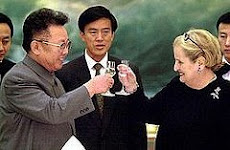In between the border of India and Bangladesh lies an archipelago of villages, known as enclaves, that do not belong to any claimed territory. 50 Bangladesh enclaves exist in India, and 111 Indian enclaves exist in Bangladesh, but neither country will claim and take responsibility for these territories. A person can live inside a Bangladeshi enclave, but claim he is an Indian, and all of his extended family are Indian. Since both countries have refused to take responsibility for the enclaves, these villages do not enjoy to full rights, protections, and public goods offered to normal citizens. The villages have no public infrastructure, schooling, or electricity.
To make matters worse, these people cannot provide documentation of citizenship to either country, nor can they prove they live in an enclave and they are not illegal immigrants. Parents have to forge documentation to send their children to school. When a man from an enclave traveled into India to visit his family, he was arrested and accused of illegal immigration. This man could not prove that he lived in an enclave because it has no government and cannot give documentation to the villagers living there. Only after the villagers of his enclave protested was the man released from jail.
This situation connects to Huntington's clash of civilizations theory, where maps of the world are skewed because they do not show the blending of cultures on boarders of states, such as the Indian and Bangladeshi enclaves.
http://www.nytimes.com/2011/10/10/world/asia/at-india-bangladesh-border-living-in-both-and-neither.html?pagewanted=2&_r=1&ref=world
By Rachel Foy
Sunday, October 9, 2011
Subscribe to:
Post Comments (Atom)

No comments:
Post a Comment